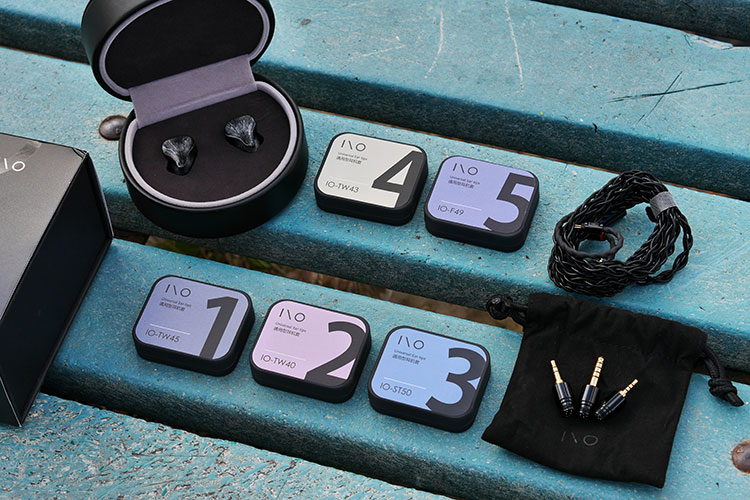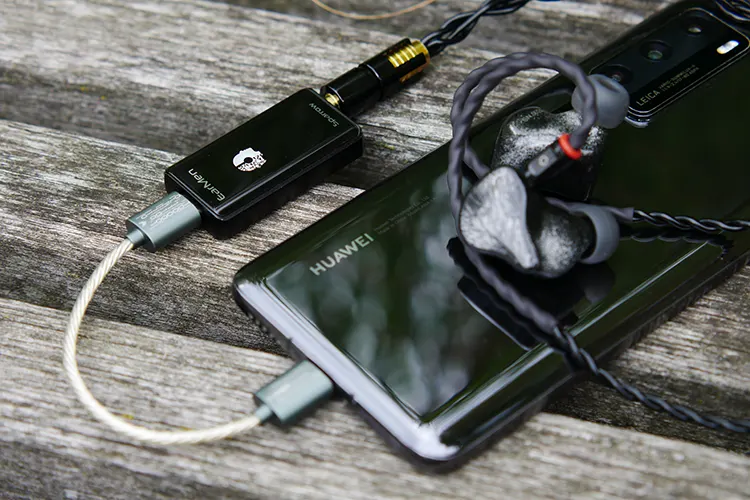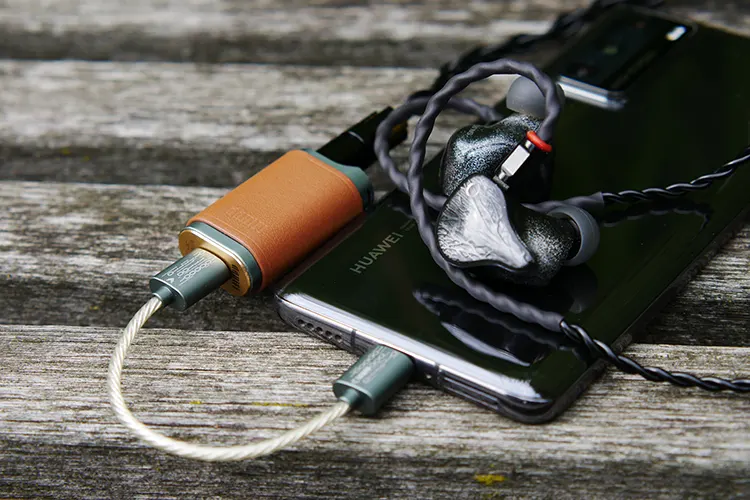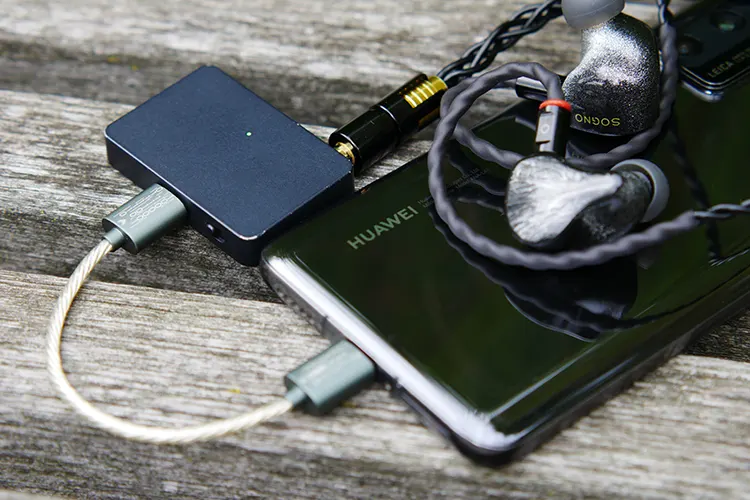Sound Impressions
Summary
The SOGNO is a versatile earphone that handles almost everything you toss at it with confidence. It is bright and bassy with good mids and technical qualities that compete with more expensive products.
The bass is well extended and nicely textured, though there is a bias towards the upper mids and lower treble that overshadows some of the low-end performance. This tune can end up being a hint fatiguing at higher volumes or with naturally bright tracks.
The potential for fatigue aside, the SOGNO offers a well-balanced, versatile, and coherent tune that is entertaining and capable.
Bass
The SOGNO’s low-end is warm with a satisfyingly refined, organic quality. Extension is quite good with the driver producing a solid amount of visceral feedback that you can feel rumbling your eardrums, but not excessively so.
The mid-bass region is nicely balanced with the rest of the signature, giving the presentation a realistic amount of warmth and weight. It also gives the SOGNO a solid punch to its attack and decays at a comfortable rate that allows it to keep up on rapid basslines.
Texturing is also excellent with grungy notes sounding appropriately gruff. The speed and clarity ensure no smearing, even on rapid basslines on congested tracks.
Mids
The SOGNO’s midrange isn’t tuned quite as well as the low end, with a prominent 3k peak that brings the vocals up, but at the expense of low-end presence and listening fatigue.
This qualm aside, the rest of the presentation is fantastic. Vocal notes are well-weighted and prominent with great clarity that isn’t negatively affected by the other frequencies.
Everything always sounds crisp and clear with plenty of texture, giving the presentation a dynamic and fluid quality that helps it succeed across various genres.
Sibilance management is surprisingly good given the upper midrange peak. Even on tracks with hot mastering, I found the SOGNO to be very listenable since it rounds off the hard edges of ‘tees’ and ‘esses’ and other effects prone to uncomfortable sizzling.
Treble
The treble region of the SOGNO has a presence region bias with only a small bump in emphasis around 11k which gives it a moderate amount of shimmer and sparkle.
The armatures handling this region do a good job pulling micro detail and keeping individual notes and effects clear and distinct. The presentation is well-weighted too, with notes having good space between them ensuring that even on busy passages, the SOGNO doesn’t suffer from congestion.
While the brilliance region could use a bit more emphasis, the presence region is not overly prominent to compensate. As such, you don’t have to worry about it being overly aggressive or harsh.
That said, there is a touch of grain that keeps the SOGNO from displaying the same levels of refinement heard in the VOLARE or more appropriate competition like the Elysian Acoustic Labs Pilgrim, both of which sound smoother while maintaining similar levels of detail and clarity.
Staging & Dynamics
The SOGNO’s staging and dynamic qualities are pulled straight from its older brother, meaning they’re fantastic. The stage is wide and deep and plenty immersive, with a good overall roundness to it that ensures it doesn’t sound flat or skewed in any particular direction.
The default vocal positioning is just outside the inner ear which gives sounds space to move very close for an intimate experience, or quite far away, further adding to the level of immersion possible.
This is another earphone that deceives you into thinking you’re hearing things around you when they’re just aspects of the music or media.
The SOGNO’s technical qualities are just as good, with channel-to-channel movement being clear and nuanced. Off-center movement is particularly good, with very small shifts being audible and trackable.
The SOGNO also layers exceptionally well which helps give tracks a good sense of depth. Combine that with effective instrument separation, and you can easily deconstruct and analyze a track and its elements with the SOGNO.
Synergy
Efficiency & Sensitivity
This earphone has a sensitivity of 126.5 dB/Vrms @ 1 kHz and an impedance of 12.8Ω +/- 10% @ 1 kHz.
The SOGNO is an easy-to-drive earphone thanks to its high sensitivity. I had no issues bringing it up to comfortable listening levels and beyond.
The low-volume listening experience is not as reliable. Through some sources, I found the SOGNO too loud, even at the lowest possible volume, and as such I found it was not an ideal pick for listening in environments/situations where unusually low volumes are desirable.
Thankfully, beyond this niche situation, the SOGNO is not picky when it comes to dongles and amps.
As is often the case, the high-output port on the Earstudio HUD100 caused background hiss, but that’s expected given it is for low-sensitivity, high-impedance, full-size headphones which is not a description that applies to the SOGNO.
On the other hand, with budget Bluetooth dongles like the FiiO uBTR and ADV Accessport Air, I experienced a lot of intrusive background hiss that made them nearly unusable with the SOGNO.
I suspect a more modern, higher-end model like FiiO’s BTR15 would provide a much more pleasant experience.
Overall, the SOGNO is an efficient, easy-to-drive earphone that requires a moderate amount of effort to pair with an ideal source.
Pairings
I used the Earstudio HUD100, EarMen Sparrow, and ddHiFi TC44C to ensure I could test the SOGNO with all three included plugs.
Starting with the TC44C and its 4.4mm balanced output, I found its smooth, organic signature a good fit for the SOGNO. The mild bass boost and added warmth helped soften the SOGNO’s prominent upper mids, making for a pleasant listening experience.
The TC44C also provided a good volume range and a clean, black background free of hiss or interference. It also retained the SOGNO’s well-textured and punchy bass, but I wish it did more to improve the visceral feedback on hand.
Moving to the Sparrow with its 2.5mm balanced out, it has a cooler signature that wasn’t as good a fit for the SOGNO. It didn’t do anything to help tame the SOGNO’s edginess in the upper mids and pushed the lower treble into a somewhat dry, artificial presentation.
Volume control was also not ideal. While it was easy to reach comfortable listening volumes and well beyond, it couldn’t achieve low enough volumes for me to use the pair comfortably in quiet situations.
The HUD100 with its 3.5mm single-ended output was my favorite to pair with the SOGNO. While their use is limited to specific sample rates, all three audio profiles sounded good with the SOGNO, though my preference was for the DCT processing which provides the most old-school, analog profile of the three.
Regardless of the selected mode, the output was smooth and clean, particularly in the treble, with great bass response and the upper midrange edge rolled off.
Power output was also good in both directions, with the HUD100 pairing well in both silent and noisy areas with equal effectiveness.




